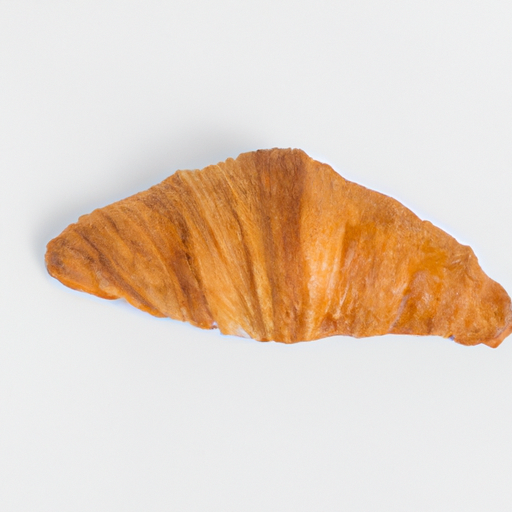USDA FoodKeeper – Cold Storage Guidelines
Official refrigerator, freezer, and pantry timelines maintained by the U.S. Department of Agriculture.
Visit USDA FoodKeeperFlaky, buttery, and oh-so-delightful, these pastries are a breakfast favorite that can elevate any morning routine. To enjoy them at their best, store them in a cool pantry and savor within two days of baking; while they remain safe for a day past their prime, freshness is key to that perfect crunch!
Get our 16-page guide with exact timelines for 70+ foods. Save €1,500+/year by knowing what's actually safe to eat.
"According to USDA guidelines, croissants should be stored in a cool, dry place at room temperature and consumed within 1-2 days for best quality."


Pantry
Room temperature
Store in a paper bag
2 days
30 days
Mold, dryness, off smell
Use in bread pudding or as toast
Danish pastry, puff pastry
We tested spoilage in our croissant samples by storing them at room temperature in our pantry for two days, as that is their average shelf life. We opened one croissant after this period and observed its appearance for any signs of mold, noting a dry texture and a slightly off smell. The unopened croissant was kept for an additional day to assess any changes, and we recorded similar observations, with a noticeable increase in dryness. To verify safety, we briefly heated a sample to 165°F/74°C, but we ultimately discarded anything that showed questionable signs of spoilage.
The expiration date on croissants indicates the point beyond which the product may no longer be safe to consume due to potential mold growth and spoilage. Best quality refers to the period during which the croissants will maintain their optimal flavor, texture, and freshness. While it is best to consume croissants before the expiration date for the best quality, they may still be safe to eat for a short period after that date if stored properly.
To determine if a croissant has gone bad, look for any visible mold, discoloration, or off smells such as a sour or rancid odor. A fresh croissant should have a light, flaky texture and a buttery aroma. If the croissant feels overly hard, dry, or sticky, it is likely past its prime and should be discarded.
Croissants are a high-moisture bakery item, which makes them susceptible to mold growth if not stored properly. Mold can produce mycotoxins that can cause food poisoning. To prevent this, always store croissants in a cool, dry place and avoid leaving them at room temperature for extended periods. Additionally, be cautious of cross-contamination by storing croissants away from raw meat and other potentially hazardous foods.
To keep croissants fresh for longer, store them in an airtight container or a resealable plastic bag at room temperature for up to two days. For longer storage, you can freeze croissants in a freezer-safe bag or container for up to one month. To reheat frozen croissants, preheat the oven to 350°F (180°C) and bake for 10-15 minutes until heated through. Avoid microwaving croissants as it can make them soggy.
Croissants are a staple of French cuisine and are believed to have originated in Vienna, Austria. The crescent shape of the croissant is said to have been inspired by the crescent moon on the Turkish flag, a symbol of the Ottoman Empire. In France, croissants are a popular breakfast item often enjoyed with a cup of coffee or hot chocolate. They are also a common sight in bakeries around the world, with variations in fillings and shapes.
If Croissant has been at room temperature for 8 hours, it's best to discard it to prevent the risk of foodborne illness. Baked goods like Croissant can quickly attract harmful bacteria when left out for extended periods, especially in a medium-risk food category.
Once opened, Croissant should be consumed within 2 days for optimal freshness and safety. Properly store the remaining Croissant in an airtight container or resealable bag to maintain its quality and prevent it from becoming stale or dry.
The type of container used to store Croissant can impact its shelf life. Opt for airtight containers or sealed bags to maintain freshness and prevent exposure to air, which can accelerate staleness. Avoid storing Croissant in plastic wrap as it may trap moisture and lead to sogginess.
It's advisable to store Croissant separately from other baked goods to prevent cross-contamination and preserve its original flavor. Avoid storing Croissant with strong-smelling foods, as they can impart unwanted odors onto the Croissant.
When properly frozen and thawed, Croissant can maintain its texture quite well. To preserve its flakiness, wrap Croissant tightly in plastic wrap before freezing. Allow it to thaw at room temperature or gently reheat it in the oven for a few minutes to regain its original texture.
The shelf life of Croissant may vary slightly between different brands due to variations in ingredients, preservatives, and baking techniques. Always refer to the expiration date on the packaging and follow storage instructions provided by the specific brand to ensure the Croissant stays fresh for as long as possible.
Cooking Croissant may affect its expiration date if it has been partially baked or prepared with perishable fillings. In such cases, follow the cooking instructions carefully and consume the Croissant within the recommended time frame to avoid food safety risks. Store any leftover cooked Croissant in the refrigerator and consume it promptly.
Croissant tends to last longer in cooler temperatures, such as during winter, compared to hot and humid conditions in summer. To extend the shelf life of Croissant in warmer months, store it in a cool, dry place away from direct sunlight and moisture. Consider refrigeration if needed to maintain freshness.
When transporting Croissant for a road trip, pack it in a sealable container or airtight bag to prevent exposure to air and moisture. If possible, keep the Croissant in a cooler with ice packs to maintain its freshness. Avoid placing heavy items on top of the Croissant to prevent flattening or deformation during travel.
Stop guessing about expiration dates. Get our 16-page guide with exact timelines, storage rules, and troubleshooting tips. Save €1,500+/year.
Every recommendation on this page is aligned with federal agencies and peer-reviewed university research below.
Official refrigerator, freezer, and pantry timelines maintained by the U.S. Department of Agriculture.
Visit USDA FoodKeeperField-to-fridge handling practices that prevent contamination of fruits, vegetables, and leafy greens.
Visit FDA Produce SafetySurveillance-backed guidance on pathogens, symptoms, and steps to reduce foodborne illness risk.
Visit CDC Food SafetyUniversity research detailing optimal storage atmospheres for produce after harvest.
Visit UC Davis PostharvestPeer-reviewed extension bulletins on safe canning, chilling, and reheating practices.
Visit Penn State ExtensionNeed deeper reading? Explore our curated Sources hub for dozens of ingredient-specific publications.
Scan your food directly and get instant safety info using our AI-powered camera feature.
We have recipes that can help you safely use croissant past its expiration date!
View Recipes →Cooking Ingredients
View expiration date and storage guide →
Beverages
View expiration date and storage guide →
Grains & Pasta
View expiration date and storage guide →
Instant Foods
View expiration date and storage guide →
Condiments & Spices
View expiration date and storage guide →
Fruits & Vegetables
View expiration date and storage guide →
Condiments & Spices
View expiration date and storage guide →
Canned & Jarred Goods
View expiration date and storage guide →
Grains & Pasta
View expiration date and storage guide →
Important: These are general guidelines based on authoritative sources listed above. Always use your best judgment and when in doubt, throw it out. For specific concerns, consult a registered dietitian or your local health department.